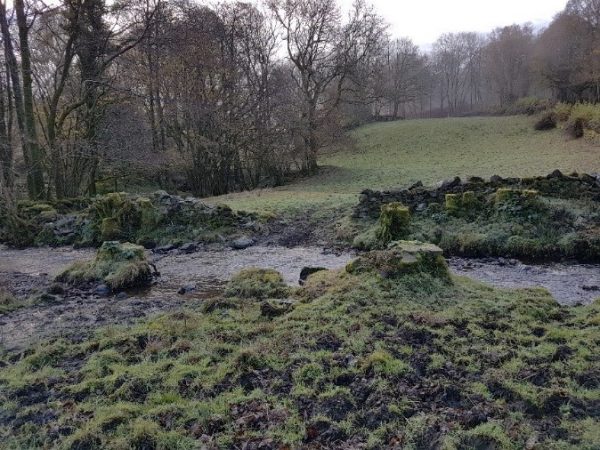Spannel Beck is located to the South of Cartmell Fell and is a tributary of the River Winster. South Cumbria Rivers Trust currently has a project incorporating watercourse fencing, formalized hard-standing crossing points and alternative livestock drinking solutions that will improve over 800 metres of aquatic habitat.
Currently the beck suffers from excessive livestock poaching and sedimentation (Figure 1 below). By fencing the beck, livestock will be excluded from the watercourse and will not be able to poach the banks. This will reduce the amount of organic material and sediment entering the beck, improving habitat for fish, invertebrates and plants. Hard standing crossing points and feeding areas will also reduce the negative effects of sedimentation and alternative drinking solutions such as solar troughs will remove the need for livestock to enter the beck to drink. The works will also make land management easier for the farmer. The options should allow the beck to function more naturally, forming a faster and deeper channel to maintain gravel transport and maximise habitat improvement . This will lead to reduced channel maintenance by the landowner. Introducing riparian buffer strips and planting trees and hedgerows will slow the flow of water and capture debris during high flows, reducing the impact on agricultural land. Hard standing crossing points and appropriate placement of gates will also make access to different land parcels easier.

Figure 1: Evidence of poaching on Spannel Beck.
The works were completed in April 2019 and we think the results look great. Once the trees and hedgerows planted in the buffer strips grow, they will make a huge difference to the river bank, slow the flow of water and be great for local biodiversity. Take a look at the news item for more information.
You can take a look at the pictures here;
